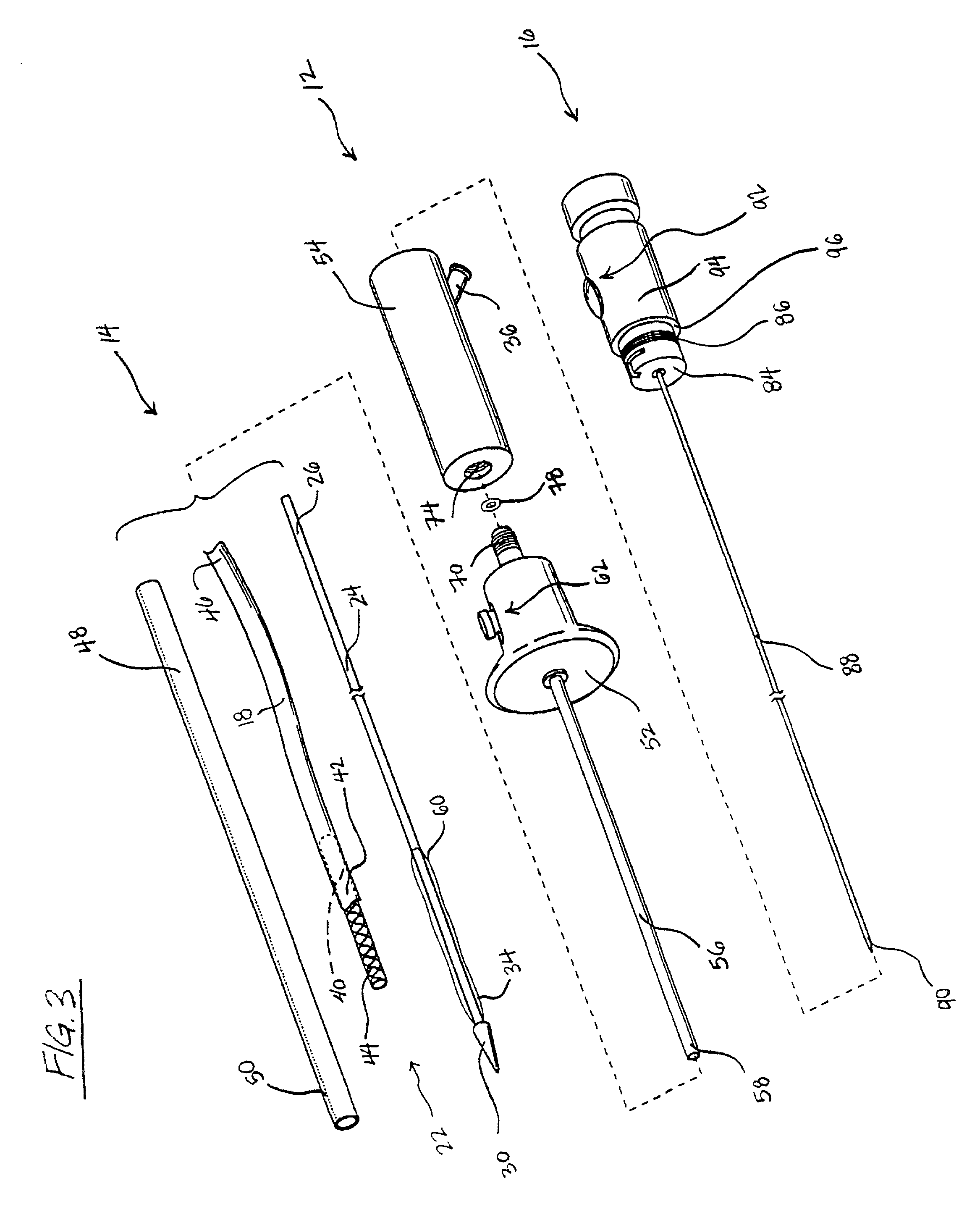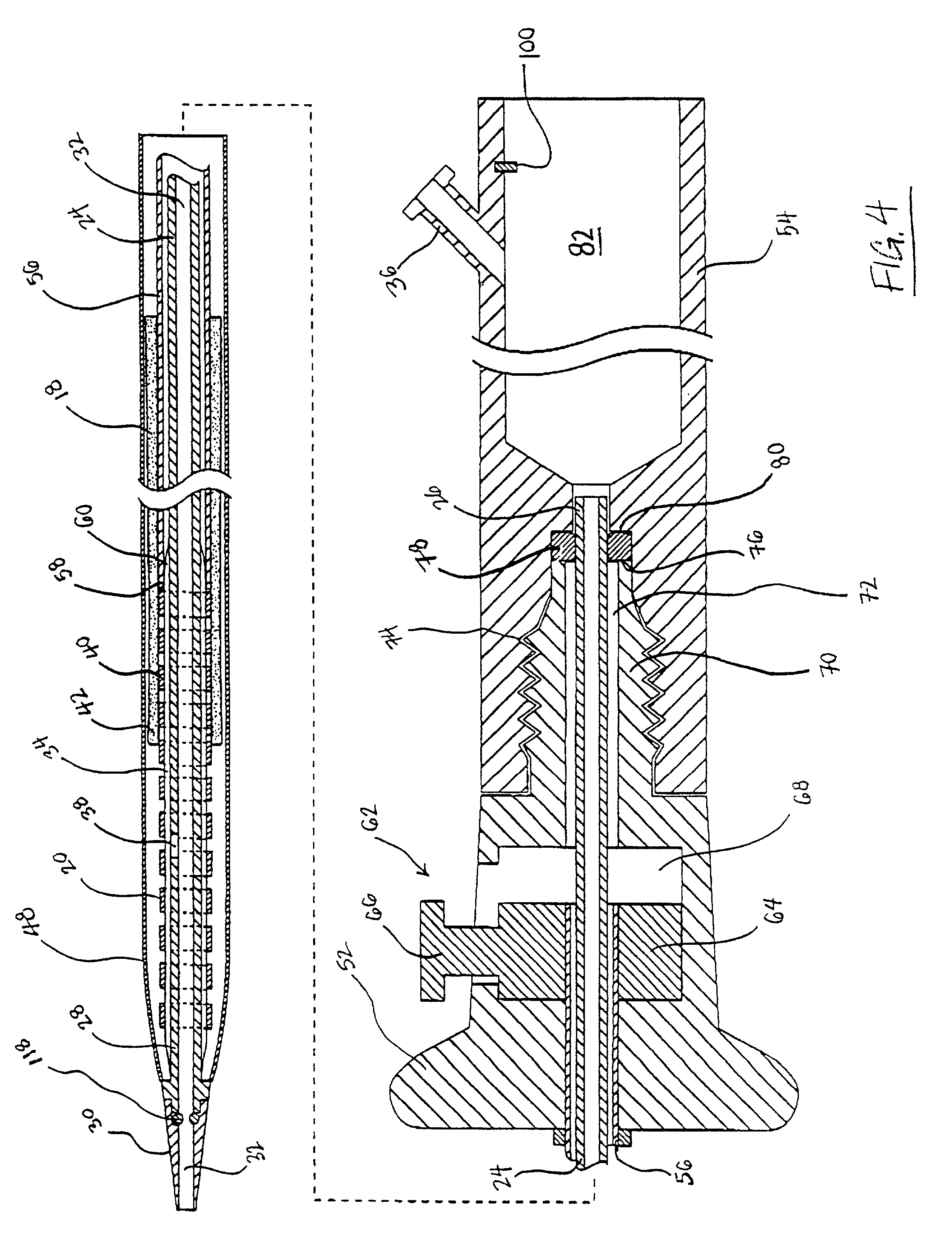Methods and devices for forming vascular anastomoses
a technology of vascular anastomosis and vascular anastomosis, which is applied in the field of methods and devices for forming vascular anastomosis, can solve the problems of high technical and time-consuming procedures, high difficulty in procedures, and the leading cause of death of heart diseas
- Summary
- Abstract
- Description
- Claims
- Application Information
AI Technical Summary
Problems solved by technology
Method used
Image
Examples
first embodiment
[0056] According to the invention, a substantially suture-free anastomosis is formed between the graft vessel and the target vessel. The term "substantially suture-free" means that the anastomosis is not a conventional hand-sewn anastomosis created by suturing the vessels together. As such, although some suture may be used, the attachment of the graft and target vessels is not created in typical hand-sewn fashion.
[0057] The vessel coupling used to form the anastomosis is preferably a conduit, and more preferably an expandable conduit, that facilitates joining the vessels to place the lumen of the first vessel in fluid communication with the lumen of the second vessel. The preferred and illustrated embodiments utilize a vessel coupling in the form of an expandable conduit because it allows the coupling to be collapsed for introduction into the target vessel and then expanded into contact with the vessel wall. Nonetheless, the invention may be carried out by using a coupling that comp...
second embodiment
[0099] One preferred device constructed comprises a vessel coupling indicated by reference numeral 130 in FIGS. 13-18. The vessel coupling 130 is in the form of a stent 132 that is secured to a graft vessel 134 to form a stent-graft assembly 136. The stent-graft assembly 136 is adapted to be secured to a target vessel so as to place the lumens of the graft and target vessels in fluid communication. FIG. 13 shows the stent 132 in its collapsed orientation while FIG. 14 shows the stent 132 in its expanded orientation. The stent 132 comprises a body 140 joined to a frame 142, each of which is preferably movable between collapsed and expanded orientations. For sake of clarity, the stent body 140 is not shown fully collapsed to its low profile orientation. The stent body 140 has a proximal end 144 and a distal end 146, and comprises a plurality of struts 148 interconnected at nodes 150. The distal end 146 of the stent body 140 is attached to the frame 142 by bands 152.
[0100] The frame 1...
PUM
 Login to View More
Login to View More Abstract
Description
Claims
Application Information
 Login to View More
Login to View More - R&D
- Intellectual Property
- Life Sciences
- Materials
- Tech Scout
- Unparalleled Data Quality
- Higher Quality Content
- 60% Fewer Hallucinations
Browse by: Latest US Patents, China's latest patents, Technical Efficacy Thesaurus, Application Domain, Technology Topic, Popular Technical Reports.
© 2025 PatSnap. All rights reserved.Legal|Privacy policy|Modern Slavery Act Transparency Statement|Sitemap|About US| Contact US: help@patsnap.com



